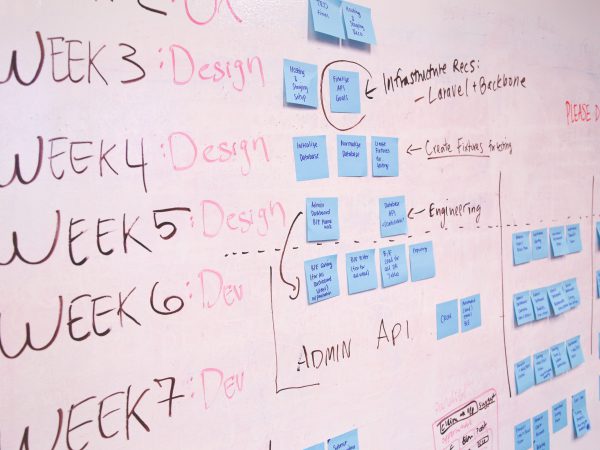
Like any other industry, IT-market has been evolving during its development process. This emerged numerous software development methodologies along the way. Some of those are outdated now, other ones are still relevant to a nowadays market.
Let’s discover 3 crucial phases of the history of software development methodologies to understand how the IT-market has come to its current state.
Phase 1: Structured Development
The software development methodologies’ history begins with structured programming – a sequential process, where planning, development, testing, and deployment stages come one after another. Modern developers know this as a Waterfall methodology. This is quite a rigid approach that exposes the following advantages:
- The development process is straightforward. There are no complex cycles that perplex the team members;
- The development process is consistent. This significantly improves the end product quality;
- The development cycle is time-effective. With a straightforward approach, Developers can focus on contributing maximum value to the project, which substantially reduces the overall cycle duration.
Considering all the following edges of structured development here’s why the market deprecated such an approach as a primary paradigm:
- User expectation mismatches. You may be developing a product for years to discover that it is not what users need;
- Delayed product marketing. With a Waterfall methodology, you can only market the solution when it’s entirely completed. This is late for our rivalry-driven IT-industry.
On balance, a structured programming phase is the first one on a timeline of software development methodologies. Here at Gravum, we believe it has established the foundation for the next development approaches we know and love.
Phase 2: Prototyping Software Development
As soon as developers learned the vital importance of testing out the ideas and verifying concept viability, the prototype software development entered the scene. This approach implies the launch of the very first raw version of an end product to test out the idea, gather the crucial feedback, and implement the knowledge in the final version.
Here’s why prototyping software development is integral to the evolution of software development methodologies:
- Prototyping introduces iterative approaches. Prototyping development is one of the first steps to implementing agile dev techniques;
- Prototyping approaches discovered the potential of user-related data. Structured development didn’t consider a volatile user community with dynamic interests and preferences, and the prototyping methodology proved its value.
This way, prototyping software development methodology paved the way for studying user feedback during the dev cycle and building more user-oriented software.
Phase 3: Agile Multi-Thread Software Development
The latest innovations in software development approaches include multiple new paradigms and prospects unknown to the market before. Let’s discover the most essential ones in detail.
Scrum
Scrum is an agile dev methodology focused on completing short dev cycles – known as Scrum sprints – to deploy the functionality and content constantly. Moreover, regular dev team meetings – daily and between-sprints ones – help to analyze the team performance and learn how to improve it.
 Kanban
Kanban
Kanban is another agile approach to building apps that splits the project into numerous small tasks for a single developer. Just write down these tasks on the stickers and put them on the Kanban board. Transferring task stickers from the Backlog to the Active or Completed section, you can track the current development state of any feature, module, or functionality.
The Scrum and Kanban approaches aim to create a multi-thread process to develop multiple modules and features concurrently. It reduces the time to market and increases project flexibility.
Read also about Project Management Trends for 2020
The Bottom Line
The latest technologies from software development methodologies history are not always the most effective ones. For instance, the short-term project will benefit the most from the Waterfall methodology, while the complex organization of agile approaches won’t recoup the costs. The project budget and requirements assessment are crucial for picking the most suitable methodology for your case.
if you are looking for a highly-qualified and flexible development team, drop a line to our Gravum software product development experts. Trust our developers to bring innovation to your project, make sure your product goes down in the history of software development methodologies pioneers.



